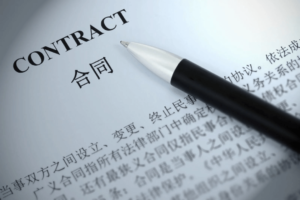Patent opposition and revocation procedures are crucial aspects of the patent system that allow for challenges to the validity of granted patents. These procedures provide a mechanism for interested parties to contest the rights granted to a patent holder, either by opposing the grant of a patent or seeking its revocation after it has been granted. Understanding these procedures is essential for both patent holders and challengers, as they can have significant implications for the protection and enforcement of intellectual property rights.
Table of Contents
ToggleKey Takeaways
- Understanding the basics of patent opposition and revocation procedures is crucial for protecting your intellectual property.
- Proper preparation is key to success in patent opposition and revocation proceedings.
- Factors such as the strength of your patent and the potential costs of litigation should be considered before filing a patent opposition or revocation.
- Navigating patent opposition and revocation procedures varies by region, with different rules and timelines in the United States, Europe, and Asia.
- Working with a patent agent or attorney can be essential in navigating opposition and revocation proceedings and developing successful strategies.
Understanding the Basics of Patent Opposition and Revocation Procedures
Patent opposition refers to the process by which a third party challenges the grant of a patent before it is officially granted. This can be done by filing an opposition with the relevant patent office, providing evidence and arguments as to why the patent should not be granted. On the other hand, patent revocation refers to the process by which a granted patent is challenged after it has been granted. This can be done through legal proceedings in a court or through administrative procedures at the patent office.
The main difference between patent opposition and revocation is the timing of the challenge. Opposition occurs before the grant of a patent, while revocation occurs after the grant. The process and timeline for both procedures can vary depending on the jurisdiction, but generally involve filing an application or notice of opposition/revocation, providing evidence and arguments, and attending hearings or trials.
Preparing for Patent Opposition and Revocation Proceedings
Preparation is key when it comes to patent opposition and revocation proceedings. Both patent holders and challengers need to gather evidence and documentation to support their case. This may include prior art references, expert opinions, market research, and any other relevant information that can strengthen their arguments.
Identifying potential challengers or targets is also important. Patent holders should be aware of any competitors or industry players who may have an interest in challenging their patents. Similarly, potential challengers should conduct thorough research to identify patents that may be vulnerable to opposition or revocation.
Factors to Consider Before Filing a Patent Opposition or Revocation
Before deciding to file a patent opposition or revocation, it is important to conduct a cost-benefit analysis. These proceedings can be time-consuming and expensive, so it is crucial to assess whether the potential benefits outweigh the costs. This analysis should take into account factors such as the strength of the case, the potential impact on business operations, and the likelihood of success.
Additionally, it is important to consider the potential impact on business operations. Challenging a patent can have significant implications for both the challenger and the patent holder. It is important to assess how a successful challenge or defense may affect market share, licensing agreements, and overall business strategy.
Navigating Patent Opposition and Revocation Procedures in the United States
In the United States, patent opposition and revocation procedures are primarily handled through litigation in federal courts. The process typically involves filing a complaint, conducting discovery, presenting evidence and arguments, and attending trial. The burden of proof lies with the challenger, who must demonstrate by clear and convincing evidence that the patent is invalid.
One key difference in the U.S. system is the availability of inter partes review (IPR) proceedings before the Patent Trial and Appeal Board (PTAB). IPR allows for a more streamlined and cost-effective process for challenging the validity of a patent. It has become an increasingly popular option for challengers due to its efficiency and success rate.
Recent developments in U.S. patent law have also made it easier for challengers to invalidate patents. The Supreme Court’s decision in Alice Corp. CLS Bank International has made it more difficult to obtain and enforce software patents, leading to an increase in challenges to these types of patents.
Navigating Patent Opposition and Revocation Procedures in Europe
In Europe, patent opposition and revocation procedures are primarily handled through the European Patent Office (EPO). The EPO provides a centralized system for challenging the validity of European patents. The process typically involves filing an opposition within nine months of the grant of a patent, presenting evidence and arguments, and attending oral proceedings before the Opposition Division.
One key difference in the European system is the availability of post-grant opposition. This allows for challenges to be filed after the grant of a patent, providing a mechanism for interested parties to contest the validity of a patent even after it has been granted.
Recent developments in European patent law have aimed to streamline and improve the opposition and revocation procedures. The introduction of the Unitary Patent and Unified Patent Court system is expected to provide a more efficient and cost-effective process for challenging patents in Europe.
Navigating Patent Opposition and Revocation Procedures in Asia
In Asia, patent opposition and revocation procedures vary significantly between jurisdictions. In countries such as Japan, South Korea, and China, these procedures are primarily handled through administrative processes at the respective patent offices. The process typically involves filing an opposition or revocation request, presenting evidence and arguments, and attending hearings or trials.
One key difference in Asian systems is the availability of utility model opposition. Utility models are similar to patents but have shorter terms and less stringent requirements. In some jurisdictions, such as Japan, utility models can be challenged through opposition proceedings.
Recent developments in Asian patent law have aimed to strengthen intellectual property rights and improve the efficiency of opposition and revocation procedures. Countries such as China have implemented reforms to streamline these processes and provide more effective mechanisms for challenging patents.
The Role of Patent Agents and Attorneys in Opposition and Revocation Proceedings
Legal representation is crucial when navigating patent opposition and revocation proceedings. Patent agents and attorneys have the knowledge and expertise to navigate complex legal processes, gather evidence, prepare arguments, and present a strong case.
The responsibilities of patent agents and attorneys in these proceedings include conducting prior art searches, analyzing the validity of a patent, preparing and filing opposition or revocation applications, gathering evidence, drafting legal arguments, attending hearings or trials, and providing strategic advice.
Choosing the right representative is essential for a successful outcome. It is important to select a patent agent or attorney with experience in the relevant jurisdiction and technical field. Additionally, it is crucial to establish clear communication and a strong working relationship with the representative to ensure effective collaboration throughout the proceedings.
Strategies for Successfully Defending a Patent in Opposition and Revocation Proceedings
Successfully defending a patent in opposition and revocation proceedings requires building a strong case. This involves conducting thorough research, gathering compelling evidence, and preparing persuasive arguments. It is important to anticipate potential challenges and address them proactively.
Responding to challenges effectively is also crucial. This involves carefully analyzing the arguments and evidence presented by the challenger, identifying weaknesses in their case, and presenting counterarguments supported by strong evidence. It is important to maintain a proactive and strategic approach throughout the proceedings.
Leveraging legal representation is another key strategy for successfully defending a patent. Patent agents and attorneys have the expertise to navigate complex legal processes, identify potential pitfalls, and provide strategic advice. Their knowledge and experience can significantly increase the chances of success in opposition and revocation proceedings.
Strategies for Successfully Challenging a Patent in Opposition and Revocation Proceedings
Successfully challenging a patent in opposition and revocation proceedings requires identifying weaknesses in the patent. This involves conducting thorough research, analyzing prior art references, and identifying any flaws or deficiencies in the patent’s claims or specifications.
Building a strong case is also crucial. This involves gathering compelling evidence, preparing persuasive arguments, and presenting a clear and coherent narrative that demonstrates the invalidity of the patent. It is important to anticipate potential counterarguments and address them proactively.
Leveraging legal representation is another key strategy for successfully challenging a patent. Patent agents and attorneys have the expertise to navigate complex legal processes, analyze the validity of a patent, and provide strategic advice. Their knowledge and experience can significantly increase the chances of success in opposition and revocation proceedings.
Best Practices for Managing Patent Opposition and Revocation Proceedings Across Borders
Managing patent opposition and revocation proceedings across borders requires an understanding of the differences between jurisdictions. Each jurisdiction has its own unique procedures, timelines, and requirements. It is important to familiarize oneself with these differences and adapt strategies accordingly.
Coordinating legal representation is also crucial when managing proceedings across borders. It is important to select representatives with expertise in the relevant jurisdictions and establish clear communication channels to ensure effective collaboration. Regular updates and coordination meetings can help ensure that all parties are aligned and working towards a common goal.
Managing costs and resources effectively is another best practice. Patent opposition and revocation proceedings can be time-consuming and expensive. It is important to allocate resources strategically, prioritize key cases, and explore cost-effective options such as alternative dispute resolution mechanisms or settlement negotiations.
In conclusion, understanding and managing patent opposition and revocation proceedings is essential for both patent holders and challengers. These procedures provide a mechanism for challenging the validity of patents, protecting intellectual property rights, and ensuring a fair and competitive marketplace. By understanding the basics of these procedures, preparing effectively, leveraging legal representation, and implementing strategic approaches, both patent holders and challengers can navigate these proceedings successfully and achieve their desired outcomes.
If you’re interested in reducing manufacturing risks in China, you may find this article on “Strategies for Reducing Manufacturing Risks in China” helpful. It provides valuable insights and tactics for businesses looking to mitigate risks associated with manufacturing in China. Check it out here.
Contact us if you need help with drafting of contracts that follows Chinese laws and are enforceable in China, background investigation of Chinese companies, protecting patents, trademarks, verification of contracts to the law in China, or help with other legal challenges that you have in China.
If you require our assistance or have further questions about our services, please do not hesitate to contact our Customer Relationship Managers Jan Erik Christensen, at janerik@ncbhub.com or Milla Chen, at huimin.chen@ncbhub.com. We look forward to hearing from you and helping your business succeed in China.








